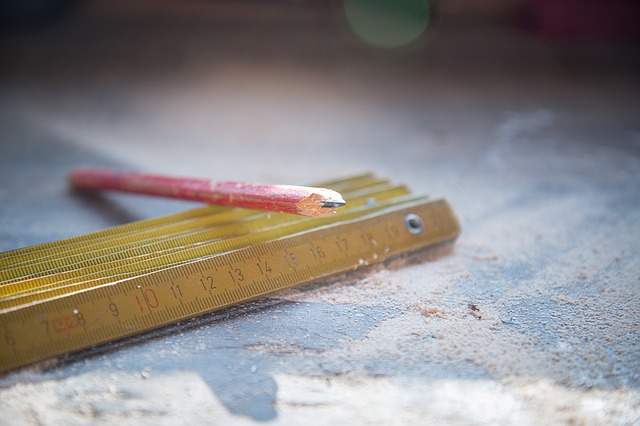It’s never a nice feeling to find your favourite piece of furniture with a loose, shaky leg. Unfortunately, years of manhandling and banging around will do that. But fortunately, you’ll be happy to know that many common forms of furniture damage can be fixed at home inexpensively, with simple tools and, of course, elbow grease. You could bring your damaged furniture to a carpenter workshop in Singapore, but where’s the fun in that?
1. Loose Chair Rungs.
Chairs go through a lot of manhandling on a daily basis. As they are pulled in and out from under tables during dinner time or shifted around the home to accommodate guests, the joints of rungs take a beating. Eventually they wear out and come loose.
New but shoddily made furniture are more likely to develop loose joints and rungs compared to older but well-built furniture.
Loose joints can be fixed by gluing the loose parts back together. First, sand off the old glue all the way to the wood’s surface. Next, use a syringe to apply wood glue into the joint of the leg. Replace the rung into the joint and clamp the parts together until the glue dries.
Gold Pines Carpenter Workshop in Singapore – Custom Made Cabinet, Kitchen Furniture, Bespoke Furniture in Singapore.
Contact Us for enquiries.
2. Shaky Chairs.
Like loose rungs, wobbly chairs are the result of wear and loss of the glue holding the legs steady. Fixing this problem is a little more complex than cleaning and gluing pieces of wood, however.
The trick is to attach corner braces to the angle between the leg and the surface it’s attached to. You can purchase braces from hardware stores or even carpenter workshop in Singapore, which aren’t expensive. It’s important that the brace is attached firmly so no gaps are present. This will prevent the wood from splitting.
3. Breaking Apart at the Seams.
When furniture starts to come apart at the seams, you’ll need to install flat corner braces to hold the pieces of wood together. Select a spot on the wood that’s thickest as this will let the screws go in tighter and more secure. Installation should be done behind the piece of furniture to keep it out of sight.
When installing, place the clamps over the joint where the seams of the wood come together while using clamps to pull the two pieces together to close the seams together. Drive the screws into the bracket, making sure that everything is firm and tight.
4. Broken Drawers.
To keep drawers light and easy to pull in and out, the sides and bottom of drawers are typically made from thin pieces of board – and a rough pull or jolt can break the dovetail corners that hold the surfaces together.
First, remove the nails from the corners. Next, separate the corners from each other gently to prevent damaging them. Sand away the old glue to the surface of the wood. Apply a layer of wood glue to the corners, put them together again, and clamp it down until the glue sets.

Dovetails of a drawer. Picture via Wikipedia.
5. Peeling Veneer or Chipped Veneer.
Veneer are thin layers of material, typically wood, that covers and protects or decorates an underlying surface below, held together by glue. Over time and exposure to moisture and wear, the glue often loosens, causing the veneer to peel off. The thinness of the veneer layer is also prone to chipping.
i) Peeling.
If you spot veneer peeling off underlying wood, the first thing you need to do is clean up the dust in between the two layers. Dust and other loose particles will weaken the bonding process.
Next, use a syringe to apply glue underneath the veneer and press it down against the underlying wood. Put a piece of scrap wood or thick layer of newspaper in between the clamp’s teeth before clamping it down. This protects the wooden surface.
ii) Chipping.
Fix chips on the veneer surface by filling out the cavities with a wood filler. Use wood fillers that can be painted over. Clean the surface of the veneer first with a cloth to remove as much dust and other loose particles before applying the filler.
6. Wobbly Tables.
There are two main culprits that cause tables to become wobbly: one of the legs of the table is shorter than the others or uneven floors. This is the reason why so many people are getting bespoke furniture in Singapore, which are usually better made.
If you’re looking for a more permanent solution than stuffing folded newspaper underneath the legs of wobbly tables, try nail glides. Inexpensive and often non-abrasive, nail glides are ideal. Originally designed to keep the legs of furniture from damaging floors, they can also be used to even out the length an offending table leg.

Nail gliders: You can find these in hardware stores or any carpenter workshop in Singapore. Picture via eBay.
First, measure the gap between the floor and the short leg. Once that’s done, drill a pilot hole into the legs of the good legs – you’re going to have to attach the gliders to all of them. For the short leg, however, you’re going to have to add a little length. Do this by adding washers to the nail of the glider so that they fit the length of the gap. Finally, drive the glider into the short leg.


